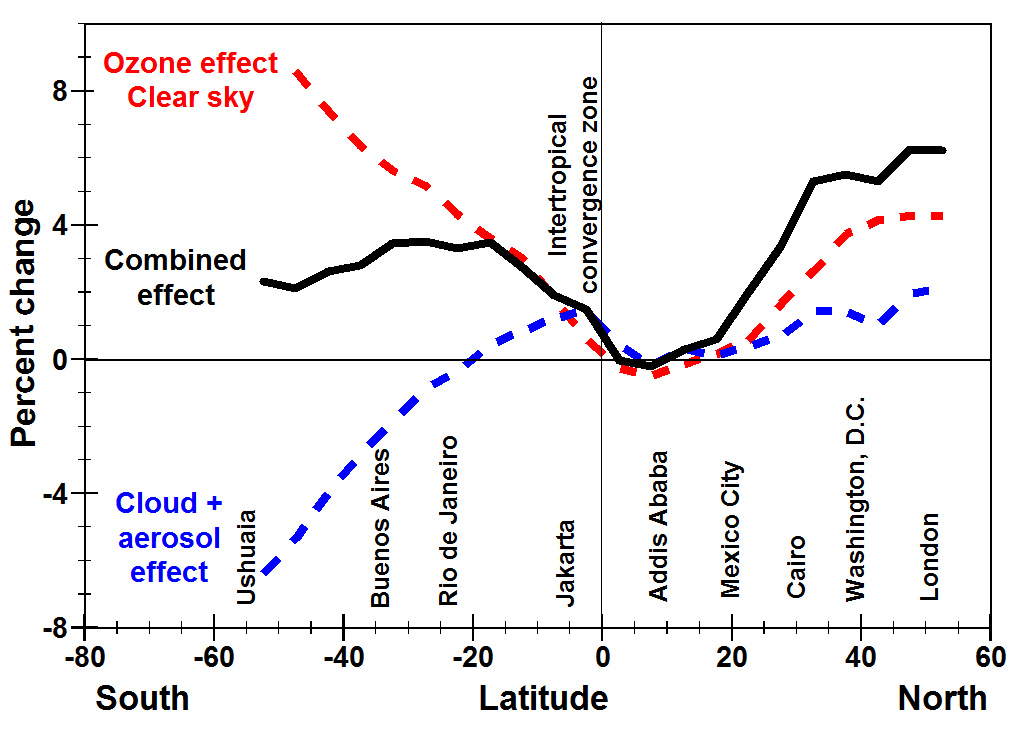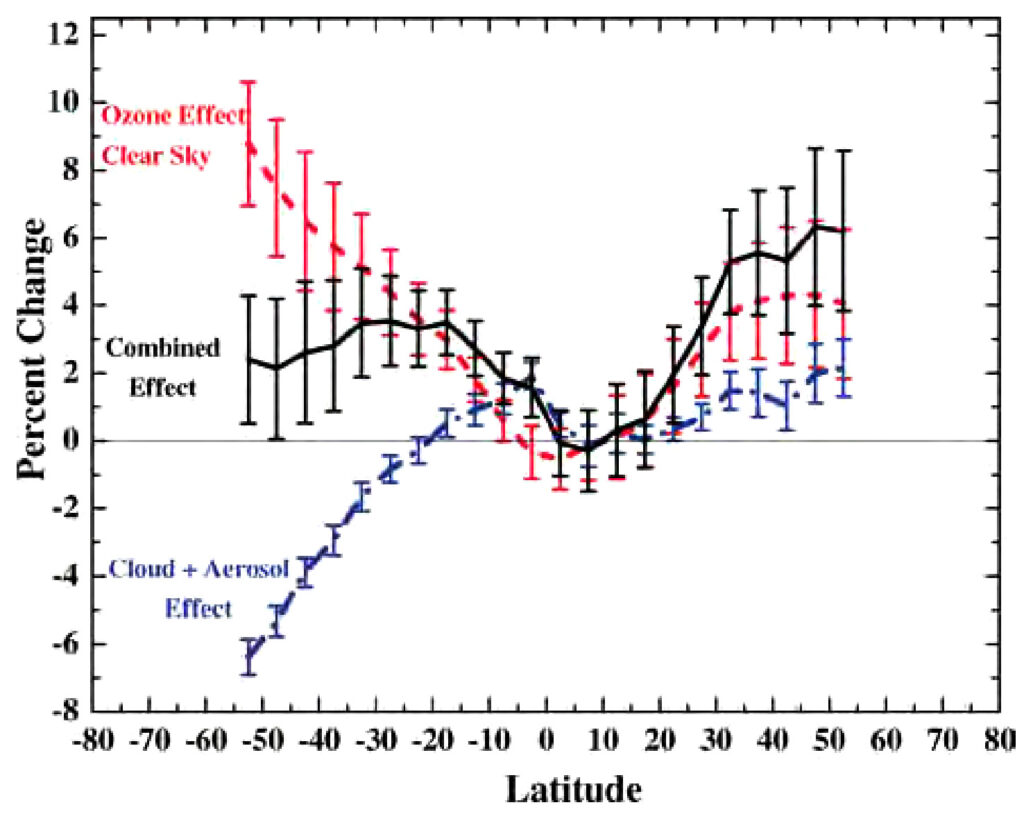Erythemal irradiance increased between 1979 and 2008 at almost all latitudes

Percent change in erythemal irradiance as a function of latitude between 55o South and 55o North over the 30-year period from 1979 to 2008, estimated from satellite data (Herman, 2010) (McKenzie et al., 2011). The dashed red line represents the change in clear-sky irradiance due to decreases in ozone, the dashed blue line represents the change due to changes in clouds and non-absorbing aerosols, and the black line represents the combined effect. Ozone in the boundary layer in the lower-most kilometer of the atmosphere is not included in this analysis.
“Although satellite observations are available to higher latitudes, the latitude range in this study is limited to 55oS to 55oN to avoid large solar zenith angle effects and seasonal bias caused by missing data during polar nights. The reduced latitude range also helps to reduce the effects of uncertainties in the retrieval associated with distinguishing reflections from clouds or snow (Fioletov et al., 2004) (Chubarova et al., 2005). Over this time period, ultraviolet radiation reaching Earth increased significantly at all latitudes except a small part of the equatorial zone.” (McKenzie et al., 2011).
This is the radiant energy that most likely caused global warming between 1970 and 1998 as a result of ozone depletion triggered by human emissions of chlorofluorocarbons. This figure shows that warming should have been greatest in the northern hemisphere, which is what was observed.
Erythemally-weighted UV (i.e., “sunburning” irradiance, UV-Ery) is the irradiance weighted by the erythema action spectrum. This is often reported to the public in terms of the UV Index (UVI) where UVI = 40 times UV-Ery (W m-2). For clear skies it can be approximately estimated from UVI = 12.5(cos(SZA))2 (O3/300)-1.25, where O3 is the total ozone column amount in DU and SZA is the solar zenith angle (Madronich, 2007) (McKenzie et al., 2011).
Below is the original figure showing error bars and copied from Figure 1 of McKenzie et al. (2011).
